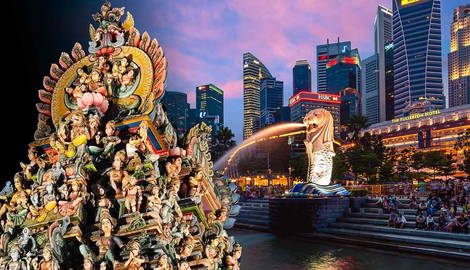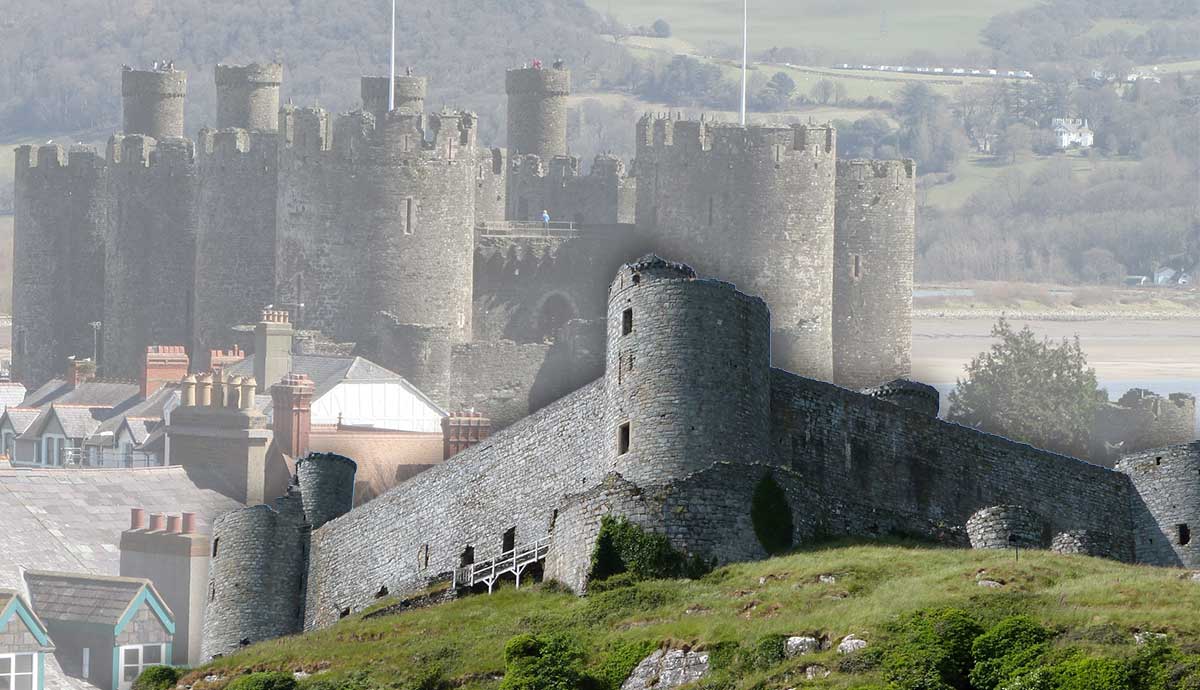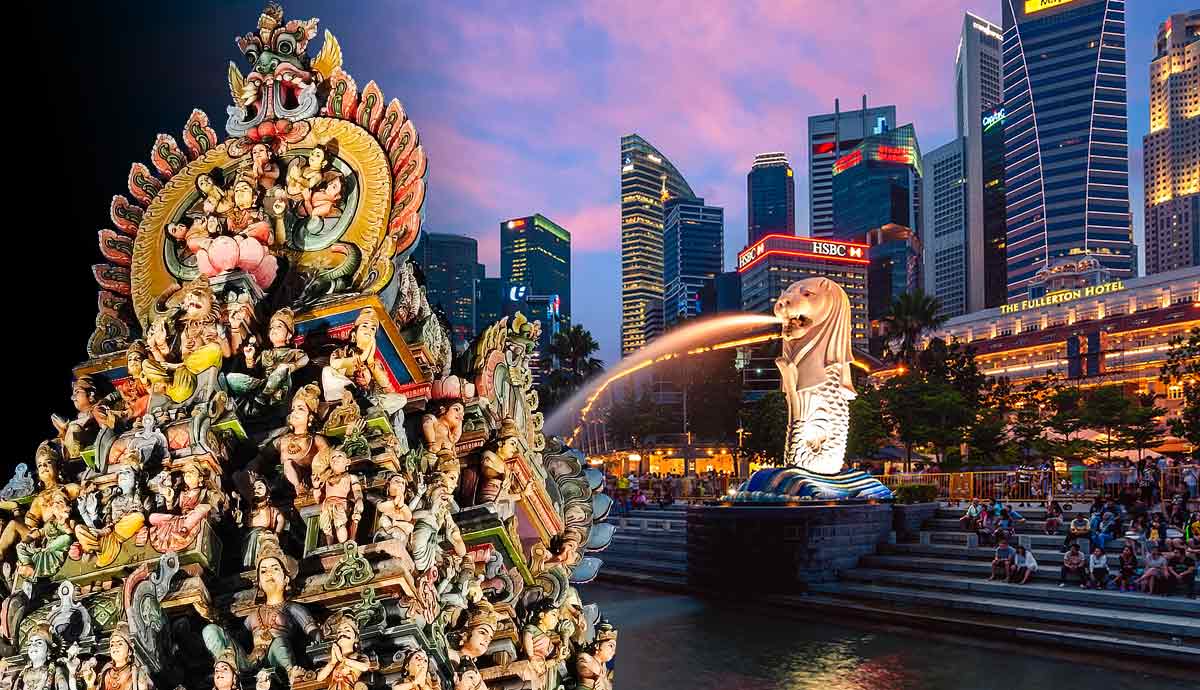
Singapore, one of only three of the world’s surviving city-states, is a tiny 30-mile-long island with 62 other islands surrounding it. But do not let its small geographical makeup fool you. Singapore is the most urbanized country in Asia. However, beneath its urban landscape beats the heart of a unique and captivating historical story. Once inhabited by only fishermen and pirates as a trading post for the Sumatran Empire, Singapore has rebranded itself as a global center for innovation, culture, tourism, and gastronomy. Singapore welcomes over 10 million tourists each year and is a fantastic starting point for those who want to experience Asia for the first time.
1. Sri Mariamman Temple
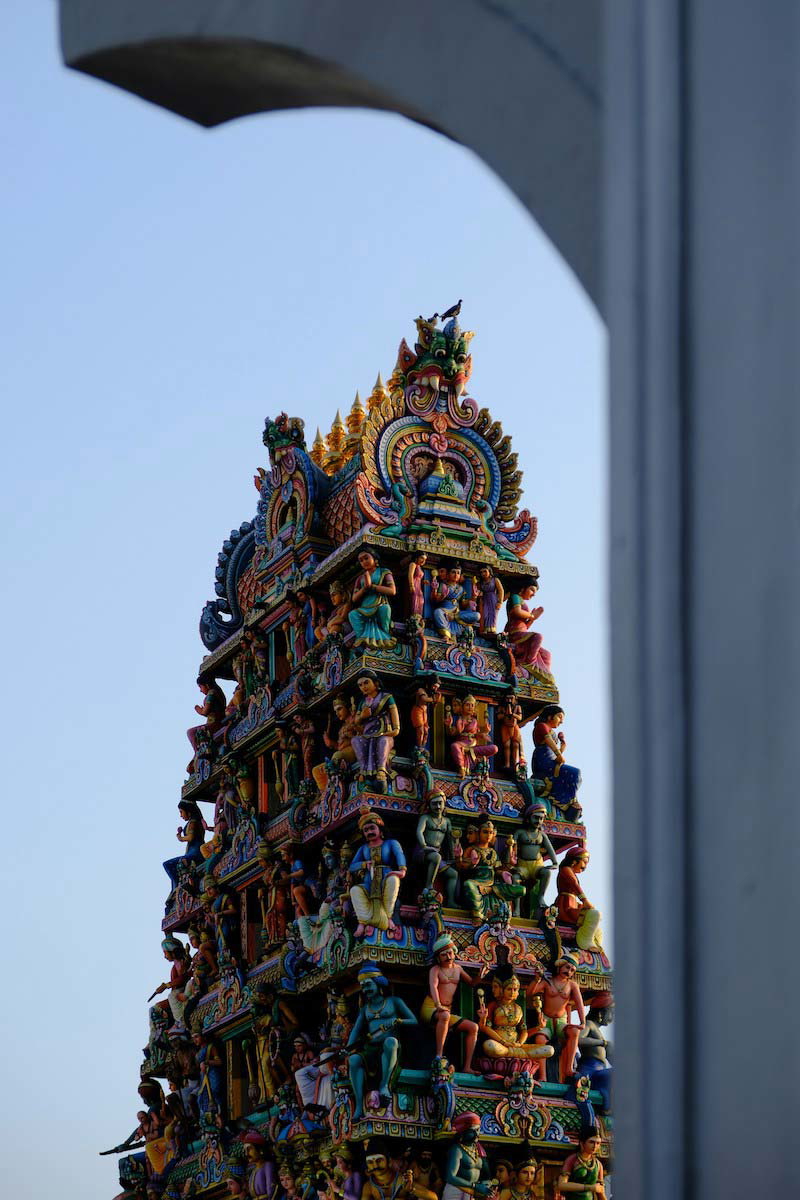
Some may believe Singapore has little personality if they only visit the bustling shops and restaurants of Orchard Road, which has manicured store windows and winding underground pathways through behemoth malls. However, Singapore boasts a rich Hindu history dating back to the 7th century. Hinduism originally came to the island nation when it was only a trading post, and despite less than four percent of the city state’s current population identifying as Hindu, the religion is still woven into the very fabric of modern Singapore.
As visitors go down the buzzy streets towards Singapore’s Chinatown, a colorful, ornamental structure in the South Indian Dravidian architectural style appears amidst the shopping and bustling hawker stalls.
Sri Mariamman Temple, built in 1827, has long been a sanctuary for South Indian Hindus in Singapore. Dedicated to the Goddess Mariamman, the Hindu goddess of healing, the temple was the home to the only Hindu priests in Singapore who could give marriage blessings.
The temple was Narayana Pillai’s project. In 1819, Pillai initially sought land to build the temple after accompanying Sir Stamford Raffles, the British administrator of the East India Company, who came to the region and founded modern-day Singapore.
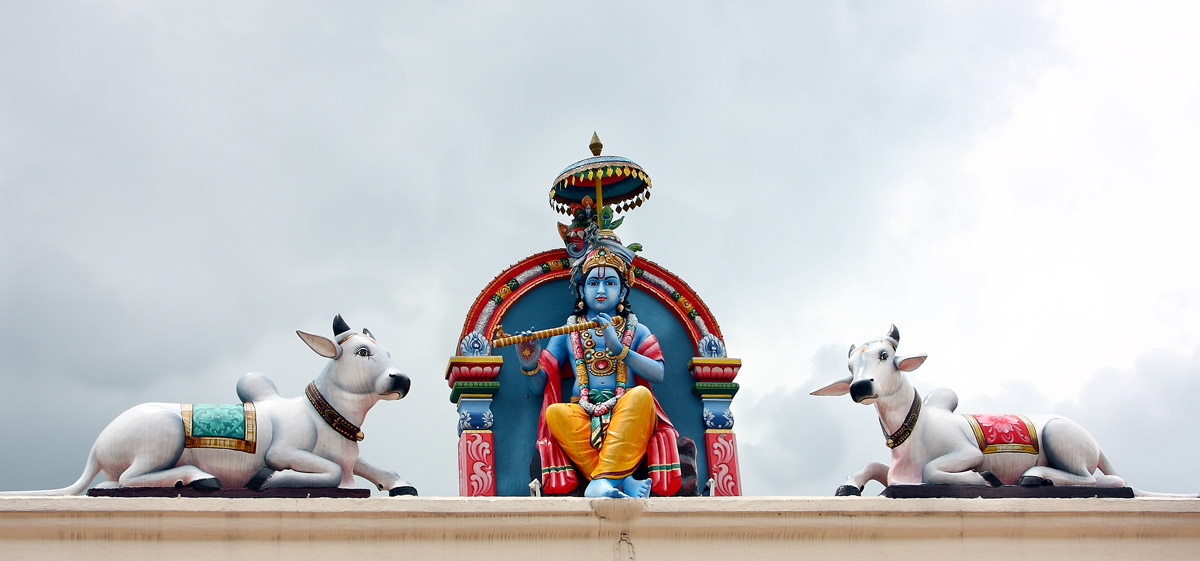
Pillai, the first Tamil Indian to step foot in Singapore, eventually became the leader of the Indian community there and a prominent businessman. Notably, the entrepreneur built his life in Singapore from scratch and rose to such a high level that he was empowered to settle disputes.
The temple became a national monument in 1973, solidifying its importance to Singapore’s Hindu community and the city-state more broadly.
One of the biggest draws for the temple is its annual fire walk, called Theemithi. Theemithi is a religious practice where Hindus walk across a fire pit for a blessing from the Hindu Goddess Draupadi. The practice has been a part of Singaporean Hindu life for over 150 years. The fire walk takes place in October or November each year.
In 2023, the temple reopened to much fanfare after undergoing a year-long restoration that cost SGD 3.5 million and involved bringing in artisans from India to refresh the temple’s sanctums, domes, and frescos.
2. Haji Lane
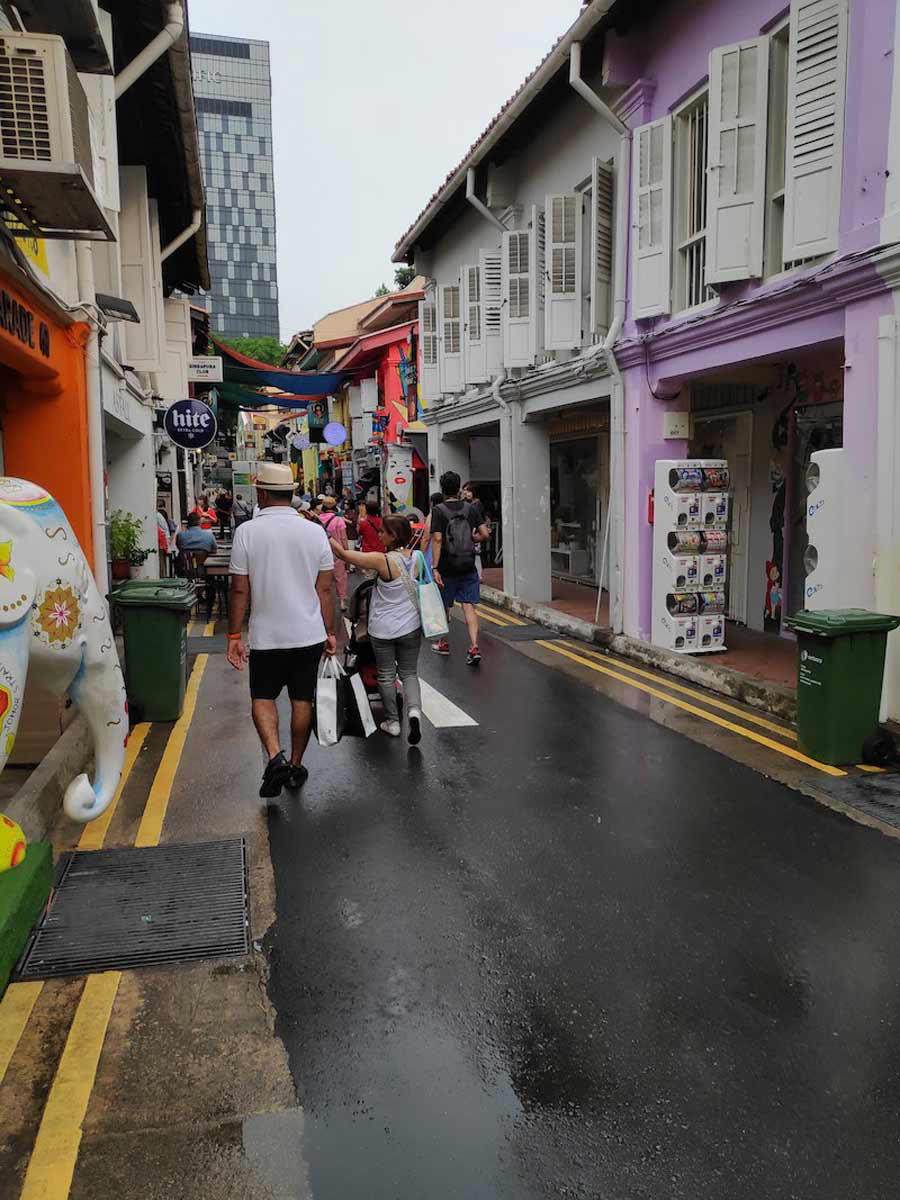
When many people think of Singapore, they immediately think of the iconic skyline, the Michelin-starred hawker stalls, or the clean streets. To maintain Singapore’s pristine atmosphere, chewing gum and spitting in public are prohibited.
Singapore does not conjure images of busy motorways packed with motorbikes or the frantic pace of other Southeast Asian destinations with a more frenetic heartbeat. However, down Singapore’s narrowest alleyway, visitors and Singaporeans alike can find themselves packed in like sardines on the busiest of days on Haji Lane.
Haji Lane, around only 200 meters (656 feet) in length and only just over four meters (13 feet) wide in some areas, gets its name due to it being a lodging for Muslims during their haj starting in the 1800s. Haj is a pilgrimage to Mecca, the religion’s most holy city.
Haji Lane was initially populated by Muslims because it was zoned for lodgings of poor Muslim families, in close proximity to the Sultan Mosque. Stamford Raffles felt it was important to zone Singapore by race. The shophouses were used to lodge Muslim pilgrims en route to Mecca until roughly the 1960s. During the 1960s and 1970s, the lane became shophouse homes for poorer Malay families.
Before 2001, the lane stood relatively empty and dilapidated until, interestingly enough, a Middle Eastern hookah bar moved in. This one business opening set the stage for revitalizing the historic lane.
Visitors can walk down the lane today and find quirky shops, great restaurants, pop-up shops, and unique graffiti. It is uncertain how much longer Haji Lane will survive as some do not appreciate the colorful addition to Singapore’s architectural landscape. There have been attempts to try to stifle Haji Lane, but it still stands as a narrow metaphorical bridge between the past and future of Singapore.
3. Raffles Hotel
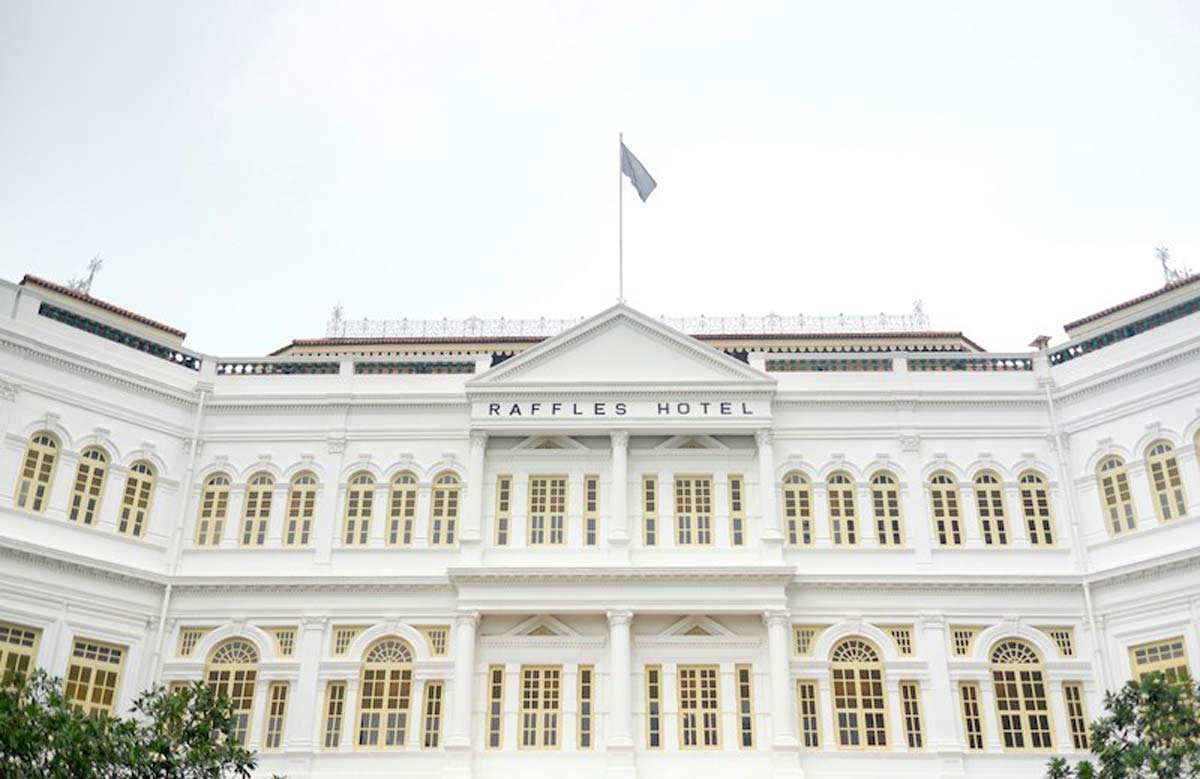
The historic Raffles Hotel sits smack dab in the center of Singapore’s financial district. The hotel, built in 1887, has welcomed many notable guests in its opulent, luxurious settings. The hotel is so significant to the fiber of Singaporean history that it employs its own historian. It was named after the founder of modern Singapore, Stamford Raffles. Also, it is one of the few 19th-century hotels left worldwide.
Raffles Hotel was initially opened with only ten rooms but slowly expanded to welcome more guests. Early on, it became a hot spot for global literary talent. Some of its earliest patrons were the writers Joseph Conrad, Rudyard Kipling, and Somerset Maugham.
The main building, the hotel’s signature calling card, opened in 1899 and quickly attracted luxury seekers worldwide. Another notable piece of history, including the hotel, is that in 1902, Singapore’s last wild tiger made its way into its billiard room, where it was later killed.
Raffles Hotel also holds gastronomic significance. In 1915, the famous Singapore Sling was invented at the hotel’s bar. Ngiam Tong Boon, a bartender at the Long Bar, invented the gin-based cocktail as a way for ladies of the time to enjoy a drink.
The hotel has hosted royalty, dignitaries, and many famous movie stars, such as Charlie Chaplin, Jean Harlow, Ava Gardner, and Elizabeth Taylor. Its white facade beckoned the rich and glamorous.
Raffles Hotel is a must-stop for any history fans in Singapore, not only for its architecture or cocktails but also for a taste of Singapore’s history, which is still very much alive and well. Anyone who can afford its pricey Singapore Slings can still be a part of it.
4. Fort Canning Park
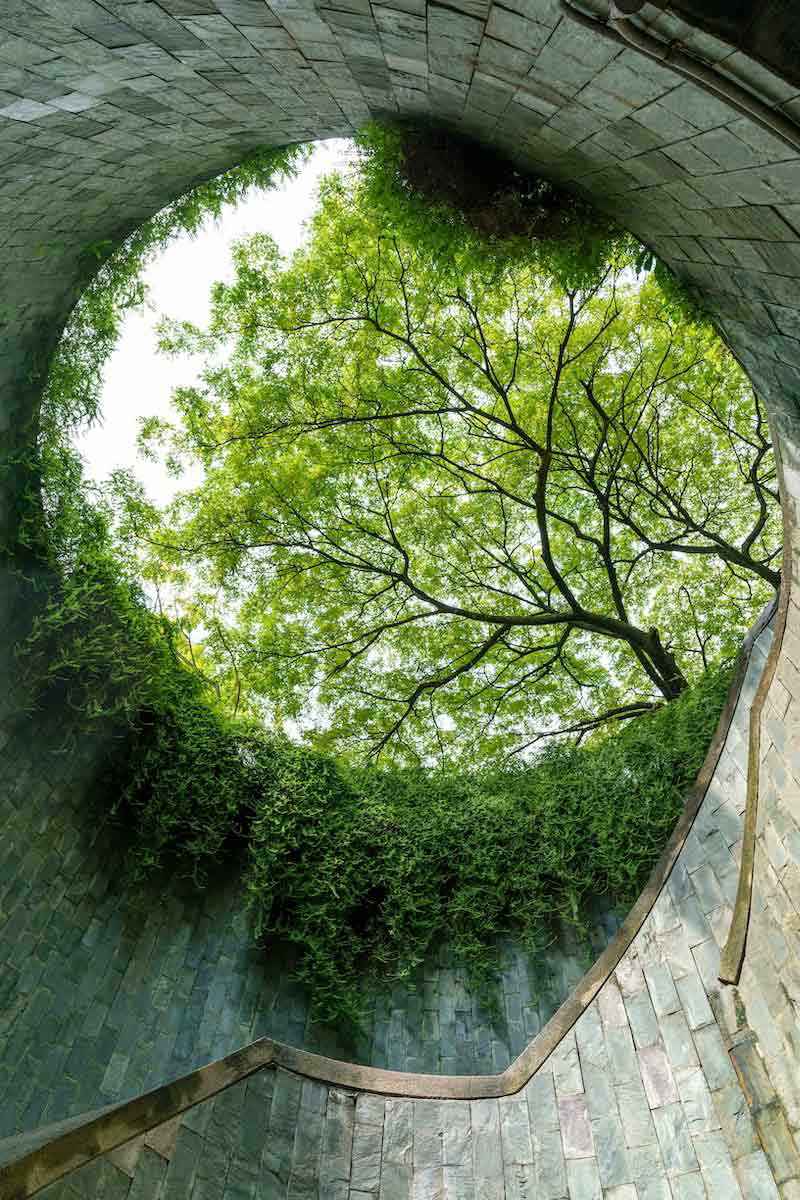
Fort Canning Park and “the Hill” cover 18 hectares of land and have been part of Singapore’s history since the 14th century. Before Stamford Raffles ushered Singapore into its modern era, Singapore was part of the ancient Malay Kingdom. Fort Canning Hill became the site of power for Malay Royalty during the reign of Sang Nila Utama, a Srivijayan prince.
Due to the hill’s location, Stamford Raffles decided to take advantage of its formidable position and build his lodging there. In 1822, Raffles decided to commission what became known as Government Hill.
In the mid-19th century, the British built a fort to protect their interests in Singapore. They called it Fort Canning to honor the first Viceroy of India, Viscount Charles Canning. The fort became not only the center of the British military, but also housed a hospital.
Fort Canning also played a part in WWII. During WWII, the site was the home of the British Far East Command. However, in 1942, the British surrendered the Hill to the Japanese, and the land signified that defeat, despite the surrender being signed off-site. Until the end of the war, it was a center for the Japanese Imperial Army.
Fort Canning was returned to the British after the war and became a training ground for the Singaporean military. In 1970, after the site had started to be used less for military pursuits, a preservation project began, and it was renamed Fort Canning Park.
Fort Canning Park is a unique reminder of Singapore’s past and future. The lush public park hosts outdoor festivals and has a botanical garden, an archaeological dig site, and even a preserved British bunker called the Battlebox, functioning as a museum. The park is a must-visit and boasts some of the best views in Singapore.
5. Chinatown
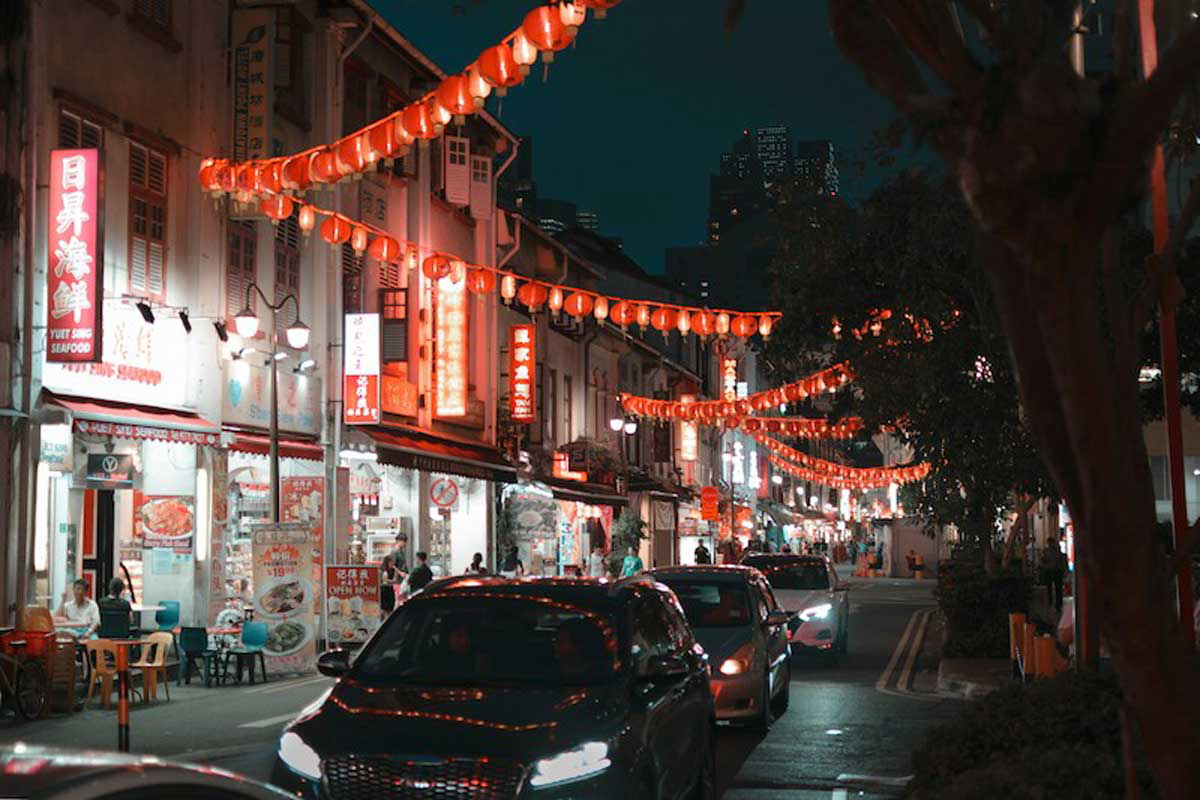
As with all Chinatowns around the world, Singapore’s Chinatown began as a section of the city meant for the Chinese who lived there. Singapore saw an influx of Chinese people shortly after Stamford Raffles established it as a port city. Chinese migrants were instantly drawn to the region due to poor conditions in their home country at the time. The Chinese saw Singapore as a fantastic opportunity.
And so began the deep connection between China and Singapore. Although Singapore has four official languages: Malay, Tamil, Mandarin, and English, over 20 percent of the population over the age of five speak Mandarin at home. Mandarin is second only to English. The roots are deep. By the 1860s, Chinese migrants comprised over 65 percent of Singapore’s total population.
Due to this influx of Chinese migrants, by the late 19th century, Chinatown had a big problem. There were just too many people, leading to unsanitary living conditions and other issues of overcrowding. Clan associations, groups of people set up to support new migrants, began helping to improve life by providing social services and helping to build places of worship.
During WWII, this part of Singapore suffered again due to Japanese occupation with the area’s Chinese being specifically targeted. This area faced more hardships than other parts of the city during that time.
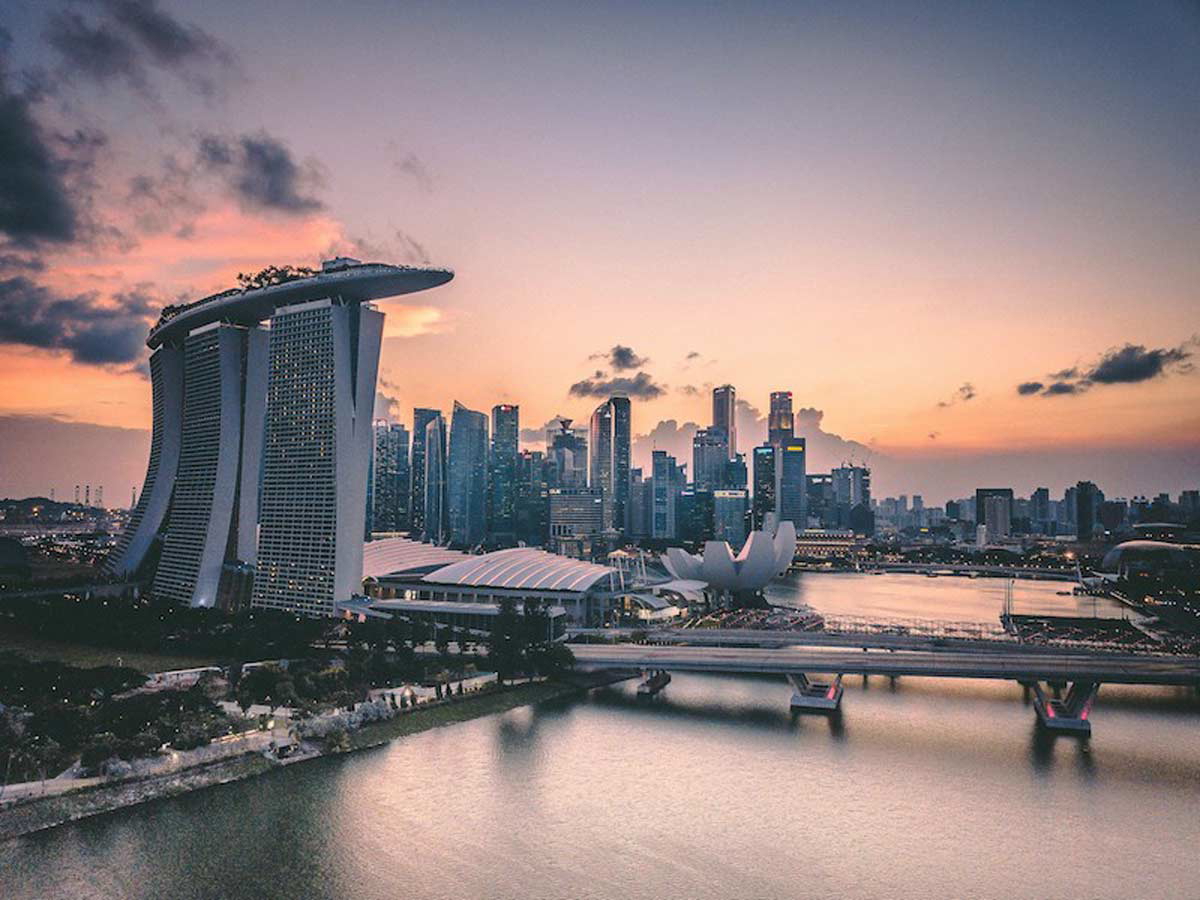
By the 1970s, Singapore’s Chinatown was still crumbling and overcrowded, and the area’s future was uncertain. However, Singapore believed it worthy of revitalization due to the region’s cultural and historical significance. It was designated a conservation area in 1989, and its rebirth began.
What makes Singapore’s Chinatown unique is that it is distinctly different from most of the city. With its low-rise buildings juxtaposed against the more modern backdrop of behemoth high-rises, it is now a unique part of the Chinese Singapore story and it is home to some of the best food in the city.
